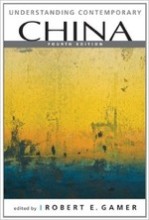China's Economhy - China's Dynamic Growth in Perspective
15 important questions on China's Economhy - China's Dynamic Growth in Perspective
How did China's yearly economic growth compare to the growth of the world economy in the period 1978-2010?
Why was China's economy much less affected by the world wide economic recession than other countries?
Describe how China's export structure has changed since its open-door policy of 1978.
- Higher grades + faster learning
- Never study anything twice
- 100% sure, 100% understanding
Which factors have contributed to China's economic growth?
- Increased domestic demand
- Trade expansion
- Increased foreign investment
What is the result of these high amounts of FDIs (in combination with a growing trade surplus)?
Other countries have pressured China to take action because of having these high amounts of foreign exchange reserves. What to these countries want to China to do?
China appreciated its currency as other countries pressured. Why are these countries not satisfied yet?
What can be said about the exchange rate of the Chinese RMB (China's currency) in the period of mid-1990s to mid-2000s?
Which dilemma does China face with regard to its foreign reserves, especially with regard to its US dollar reserves?
Describe the change in GDP in the period of 1978 - 2010 for China.
Which two sectors are the main contributors to China's economy?
Why can it be assumed that China's statistics of the period of the Great Leap Forward are inaccurate?
Why do some believe that China's GDP actually underestimates the true size of China's economy?
China has followed other East Asian countries in pursuing export-led growth. But how is China different from these countries?
Why do Foreign Invested Enterprises (FIEs) shift part of their production to China?
The question on the page originate from the summary of the following study material:
- A unique study and practice tool
- Never study anything twice again
- Get the grades you hope for
- 100% sure, 100% understanding































